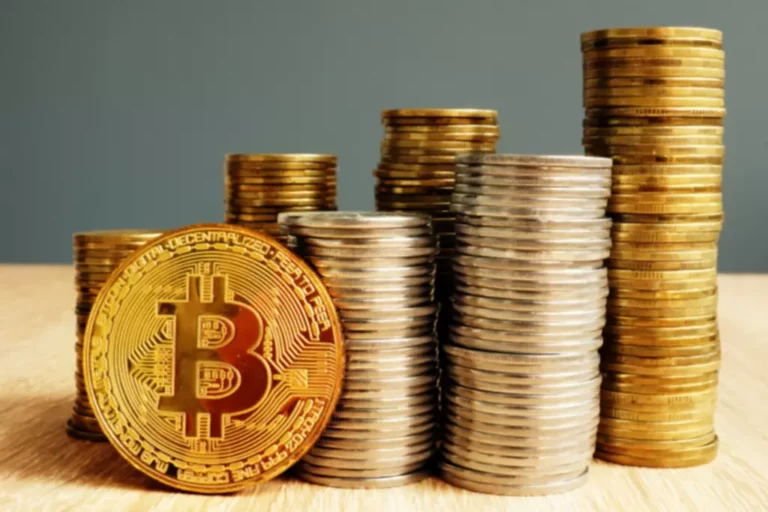Participating in these liquidity pools (LPs) may be very simple as it involves depositing your property into a common pool called a liquidity pool. The process is similar to sending cryptocurrency from one pockets to a different. A liquidity pool sometimes consists of a trading pair such as ETH/USDT. As a liquidity miner (or provider), an investor might decide to deposit both asset into the pool.
- Also, as extra traders take part in liquidity mining and provides liquidity to a selected token, it could improve its visibility and popularity, leading to further price appreciation.
- This occurs when the worth of the tokens you’ve contributed modifications in comparability with when you first invested.
- Uniswap and comparable DEXs use token pools the place liquidity providers (LPs) deposit equal values of paired tokens, enabling trades and incomes them charges.
- Liquidity mining is fairly similar to offering liquidity, as each address you supplying liquidity for the exchange.
- Liquidity mining is a approach to earn rewards by lending crypto property to DeFi platforms (Decentralized Finance Platforms).
- Sometimes smaller exchanges attract fewer suppliers, and also you get a bigger share of a smaller reward, leading to higher profits in comparison with the likes of Uniswap.
Unlike regular banking, which leaves many areas of the world unbanked or underbanked, DeFi is accessible to everyone. Among many services that this decentralized ecosystem has to offer is liquidity mining. Staking is an easier course of involving locking some tokens to take part in governance and community transaction validation. Although liquidity mining involves risks, it could play out nicely if you do due diligence earlier than you lock your cash on one of the DeFi platforms. Unlike centralized exchanges, decentralized exchanges are wholly depending on algorithms and aren’t operated by people.
The Method To Turn Out To Be A Liquidity Provider?
Due to the mentioned advantages, assets with excessive liquidity are more engaging and less dangerous. Decentralized exchanges are essential for traders that don’t wish to share their information with third events. It may be helpful for the residents of the international locations that are not provided the service on most platforms and for other teams of merchants. Centralized exchanges often cost greater fees and restrain customers due to different insurance policies. In many cases, traders rely an excessive quantity of on the centralized exchange employees. Cryptocurrencies created a complete new area of interest for traders, massive and small.
Liquidity abundance is the initially criterion for any possible liquidity mining model. Let’s define liquidity first and dive into liquidity mining proper after. Let’s say you wish to tap right into a liquidity pool on Uniswap, which is the oldest and largest DEX. This shall be a multi-step process involving several completely different cellular apps or websites liqudity mining. Governance tokens are cryptocurrencies that represent voting energy on a DeFi protocol. Even with a good distribution of governance tokens, this technique is still susceptible to inequality as a quantity of giant investors are able to usurping the governance position.
Finance
But what can you do with this pile in a permissionless surroundings, where anyone can add liquidity to it? The exchange is the market maker, whereas the market maker is the liquidity provider. Some buyers usually use the terms “liquidity mining” and “yield farming” interchangeably, but we can’t choose them because it’s neither essentially right nor necessarily mistaken. However, you have to know that liquidity mining and yield farming might sound interchangeable.

These platforms have been trying to switch centralized exchanges (CEXs) for years. While liquidity mining permits users to earn rewards by offering liquidity, yield farming and crypto staking are distinct passive income methods in the crypto house. Yield mining is a more advanced kind of passive revenue by way of cryptocurrencies. It involves such ways of incomes as staking most popular assets and the governance tokens of the DeFi platform. Liquidity mining is more simple, however it can’t offer as massive returns as yield mining.
The cause for this is also the speedy development within the field of decentralized finance (DeFi). Investors can generate cash flow via cryptocurrencies and FIAT currencies in varied methods. You can lose cash during liquidity mining if the crypto worth of the token goes down, and you withdraw.
That method, there is not a ready period and the swap is accomplished immediately. For instance, you present an exchange with a stack of USDT cash and receive different tokens as an APY. If you’re providing liquidity to an AMM, you’re probably uncovered to impermanent loss. Make positive to read our article about it if you’re contemplating putting funds right into a two-sided liquidity pool.
What Are Wrapped Tokens?
Balancer is one other Ethereum-focused decentralized trade giving UniSwap a run for its cash. It is arguably the most effective various to UniSwap out there, offering better terms for each liquidity providers and merchants alike. On the other hand, liquidity mining is also a way for crypto customers to help a DEX. In doing so, crypto users make sure the existence of an alternative to centralized exchanges. This gives business members a real, decentralized monetary industry that many traders dream of. Let’s say that you’re thinking about a token and imagine it’s going to turn into extremely valuable in the future.

In staking, the higher the stake, the upper the reward, just like liquidity mining. Decentralized exchanges, or DEXes like Uniswap and SushiSwap, connect patrons and sellers of different cryptocurrencies while not having a third-party trading platform. They make the most of good contracts on platforms like Ethereum and Binance Coin, bypassing exterior servers and databases.
What´s Liquidity Mining?
Bitcoin (BTC) is a well-liked network that makes use of mining; Uniswap is a well-liked dApp that permits for liquidity mining. Another, even more cutting-edge use of liquidity swimming pools is for tranching. It’s a concept borrowed from traditional finance that involves dividing up monetary merchandise based on their risks and returns. As you’d expect, these products allow LPs to select personalized danger and return profiles. As we’ve talked about, a liquidity pool is a bunch of funds deposited into a smart contract by liquidity suppliers. When you’re executing a trade on an AMM, you don’t have a counterparty within the conventional sense.

Once you’ve selected your buying and selling pair, you’ll find a way to choose from a quantity of reward tiers with different rates of interest. The charges for extra commonly used cryptocurrencies and stablecoins are typically decrease, whereas uncommon or exotic coins typically carry higher fees. Insider buying and selling is a giant problem across multiple markets, including crypto and liquidity mining specifically. The issue grows exponentially if you’re leaping around newer exchanges lacking credibility. The primary ideas of liquidity mining haven’t drastically changed since its inception, but the strategies, complexity, and forms of rewards have developed. Given the growing number of DeFi platforms and tokens, there’s an increased array of choices for liquidity mining.
Which Platforms Help Liquidity Mining?
Participating in the governing process may bring liquidity suppliers even more benefits, as they’ll profit not directly from shaping the project’s future. Say you maintain substantial tokens to initiate a vote on adding a model new buying and selling pair. As a result, you might present liquidity for this newer pair with larger return rates over the brief run.

Calculating and predicting IL could also be an entirely completely different story, but the fundamental functioning of impermanent loss is comparatively simple. Liquidity mining is changing into increasingly well-liked amongst crypto investors for a good reason. This type of ledger know-how is what’s behind cryptocurrencies and other tech tendencies. Following the Trust Project tips, this feature article presents opinions and views from business specialists or people. BeInCrypto is dedicated to transparent reporting, however the views expressed on this article don’t essentially mirror these of BeInCrypto or its staff.
It has opportunities for institutional buyers, professionals, and amateurs. Over ten-plus years, crypto fanatics earned cash by way of holding crypto cash, mining them, buying and selling them, staking, and so forth. One of the later ways to make money via crypto is by taking part in liquidity mining. If you present liquidity to an AMM, you’ll need to bear in mind of an idea known as impermanent loss. In short, it’s a loss in greenback worth in comparability with HODLing when you’re offering liquidity to an AMM. In brief, liquidity mining incentivizes customers to offer liquidity to DEXs or dApps, while staking incentivizes customers to hold onto assets and participate in community safety.
